on Fabric, Retro-Futurism, & What You Can Learn from WD-40
Sheet metal gives way to fabric. . .Callum’s chair. . .Pininfarina’s e-moped design. . .Volvo EV trucks down under. . .WD-40 on management. . .’23 Prius examined. . .Mercedes-Maybach rolling catwalk. . .
Fering & Fabric
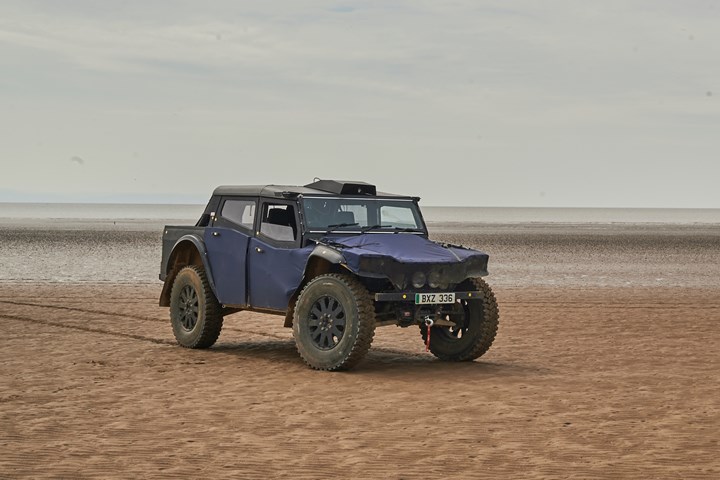
The Fering Pioneer makes extensive use of fabric for exterior body panels. (Image: Fering)
The Fering Pioneer is still in its prototype stage, with production vehicles not anticipated until 2024, but this electrified off-road vehicle from the U.K. is worth keeping an eye on because it is using a body material that is, well, unusual.
Fering’s Tom Archer told us: “It’s a technical fabric we are developing with a partner that is similar--but far superior—to a canvas material.”
And this isn’t being used in a limited manner on the vehicle.
Archer:
“Currently the fabric is being used on all the panel work, except the rear load bed area.”
The company is also considering using the fabric—which is said to be similar to that used for hiking boots and marine sails—on the inside of the fenders in order to take advantage of sound-insulating properties.
Some Specs
The Pioneer is 217.6 inches long, 78.7 inches wide and 77.7 inches high (it has an adjustable height, +14.3 inches, -5.3 inches). It has a curb weight of 3,307 pounds.
The 4 x 4 has two electric motors that provide a total 800 Nm of torque.
The total electric range is 49.7 miles.
But the total range is said to be 4,350 miles (a.k.a., 7,000 km).
As that might seem like an error, Archer confirmed it. He says there will be more details forthcoming next year explaining how this could happen.
But at this point, he notes there is an on-board “bio-fuel generator that charges the EV drive system. The generator charges the battery that powers the motors and in turn drives the wheels.”
The generator runs on a variety of bio-fuels.
Note
These are still early days for the Pioneer. The first prototype was tested for months at the Millbrook Proving Ground in the U.K. and is now being disassembled and analyzed.
Prototypes 2 and 3 are to be built early in 2023 and customer evaluations will follow.
///
Ian Callum Designs a (Somewhat)* Stationary Object

Ian Callum is well known for his exquisite designs for Aston Martin and Jaguar. Now he has designed. . .a chair and accompanying ottoman. (Image: CALLUM)
Ian Callum, the man who designed the Aston Martin Vanquish, Jaguar F-Type and other vehicles that are associated with going fast has designed something that goes. . .0 mph.
A chair.
Callum, who started a design consultancy after retiring from Jaguar Land Rover in 2019, has designed the CALLUM Lounge Chair.
There is a bit of the automotive to it, as the chair has an exposed carbon fiber structure.
Also, the chair shown in the photo above is upholstered with leather from Bridge of Weir, the Scottish company that has been providing leather to luxury OEMs since 1905. (Yes, among its customers are Aston Martin and Jaguar Land Rover.)
“The CALLUM Lounge Chair has been inspired by an undisputable design icon, the 1956 Eames Lounge Chair and Ottoman,” says Callum.
Auto Association
The reference to the Eames chair has an automotive adjacency.
Charles Eames was the head of the industrial design department at the Cranbrook Academy of Art—in suburban Detroit—where he was to meet Ray Gayber in 1940. They married in 1941, and together were to develop the chair.
One of Charles Eames’ friends was architect Eero Saarinen, who designed the GM Technical Center in Warren, Michigan (20 miles south east of Cranbrook).
So when you think “Eames chair,” think of the Detroit connection.
Chairs & Cars
Ian Callum continued, “This started out as a design study, but we received so much interest that we decided to create a limited run of 50 chairs. While furniture does afford some design flexibility that cars don’t, you still have ergonomics, anthropometrics and overall comfort still at play, so has brought with it new and exciting challenges for the CALLUM team.”
Base MSRP: £8,500.
==
*It swivels
///
Retro-Futuristic Electric Moped
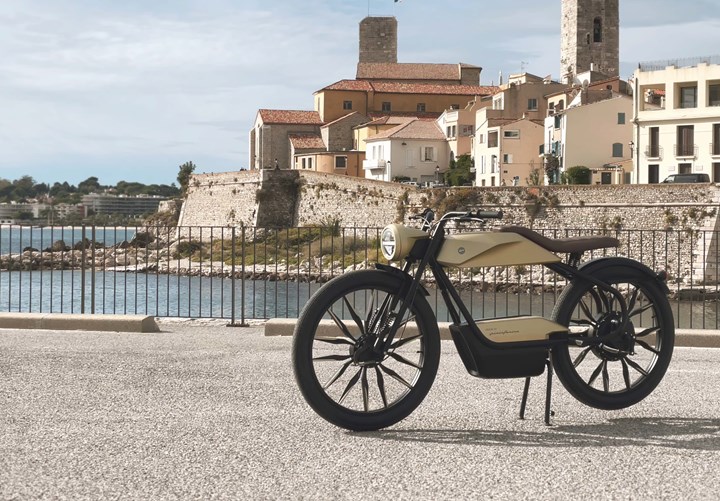
An electric bike designed by Pininfarina. How to go retro. (Image: Pininfarina)
Speaking of designers of fast things and now things not-so-fast. . .
Pininfarina, the legendary Italian design house known for designing stylish and quick cars (e.g., the Ferrari Testarossa), has designed a vehicle that is limited to a top speed of 45 km/h (a.k.a., 28 mph). . .an e-moped.
The Eysing PF 40 comes from a Dutch manufacturer.
Powered by a 2.0-kW motor, it has a 1,720-Wh lithium-ion battery and a range of up to 100 km (62 miles).
According to Pininfarina, a “retro-futuristic” design approach was taken in developing the PF 40 bike, with the “retro” going back to motorcycles of the 1930s.
Deliveries of the PF 40 are to begin in 2024.
Starting MSRP: €13,780.
///
(Electric) Truckin’
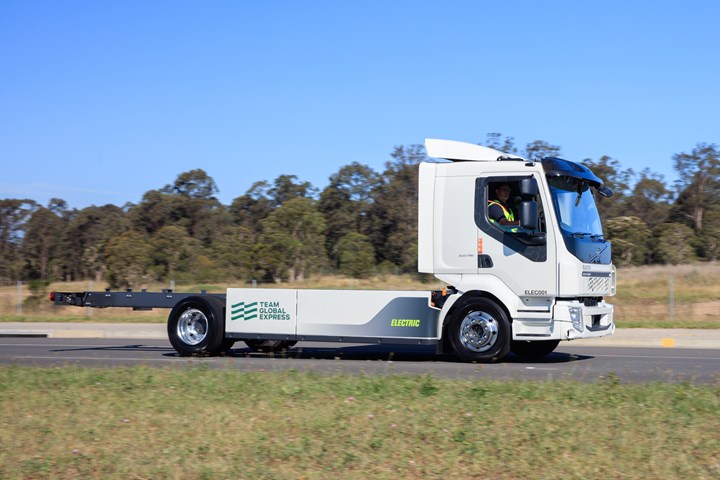
Perhaps not as exotic looking at the Tesla Semi, Volvo is putting this EV to work right now. (Image: Volvo Trucks)
While the Tesla Semi is getting lots of attention despite the fact that there is comparatively little in terms of detailed specs, other truck manufacturers are building and selling electric trucks.
Last week Volvo Trucks announced that it has received an order for 36 model FL trucks from Team Global Express, an Australian logistics company.
The trucks are to go into operation in Sydney in Q1 2023 as part of Team Global Express’ metropolitan pickup and delivery fleet. The trucks have a load capacity of 5.5 tonnes (6 tons).
In light of the light information regarding the aforementioned Tesla Semi, we asked Volvo for some more information about the actual trucks and the implementation.
The FLs in Australia are fitted with four batteries, for a total 266 kWh. This will provide a range of “up to 300 km depending on the application (i.e., reefer or dry goods van, etc.).”
The AC charge time for the trucks is approximately 9 hours because they are “generally charging from 10 to 20%.”
And as for the charging infrastructure (let’s face it: commercial trucks need a different infrastructure from one that charges your Chevy Bolt): “The purchase of these vehicles is part of a wider decarbonization project that includes significant charging infrastructure being installed at the Sydney depot where the trucks will be based. Volvo Group is working with the charging provider and the commercial agreement is still under development.”
Yes, fleets are going electric.
Further proof
Also last week. . .
Deustche Post DHL Group announced that Ford Pro will be providing the logistics company with more than 2,000 electric delivery vans by the end of 2023.
The E-Transits are 2-tonne trucks.
“Electrification of last mile logistics is a major pillar to decarbonize our operations. Adding the new Ford E-Transit to our global fleet of around 27,000 electric vans further strengthens our capability of providing green delivery services worldwide. Joining forces to address our logistics specific requirements will drive operational and service efficiency further,” said Anna Spinelli, Chief Procurement Officer & Head of Mobility, Deutsche Post DHL Group.
And DHL Express Canada announced that it is adding BrightDrop Zevo delivery vans to its fleet.
Not uncoincidentally, BrightDrop and parent company GM announced the same day DHL made its announcement that the CAMI Assembly Plant in Ingersoll, Ontario, which was completely retooled from crossovers to the trucks that can carry up to 2,200 pounds, was officially in production.
(To be fair to logistics companies, it should be noted that the first Zevo 600s—built for GM by supplier Kuka—were delivered to FedEx last year.)
///
Corporate Lesson from. . .WD-40
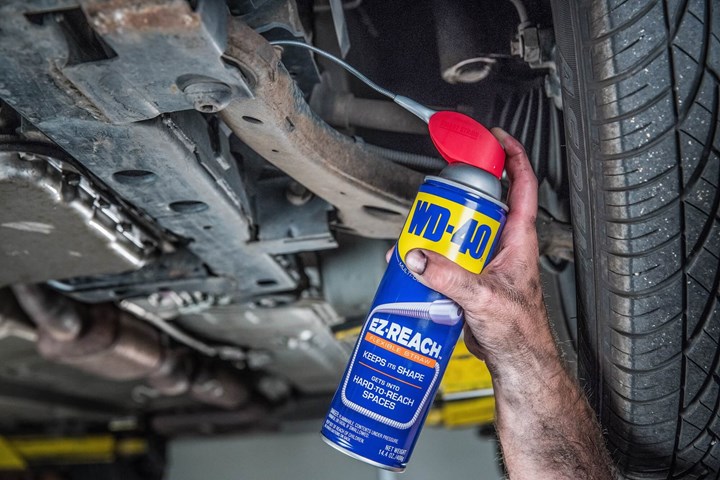
WD-40 also has an approach to reduce friction among its staff through a pledge that requires personal responsibility. (Image: WD-40)
Although you probably have a can of WD-40 around your house or garage, you probably don’t know that the company has published on its website 2,000+ uses for the product that was developed in 1953 for the aerospace industry.
And while the multiplicity of uses may seem surprising, the level of surprise is nothing compared to the company’s claim that the chemical formula for the multi-use product is so secret “the company never even filed for a patent” and “only a single person knows every exact ingredient that goes into the famous formula.” Makes the Colonel’s recipe seem rather pedestrian.
Describing Expectations
But what’s more interesting about the WD-40 Company—and probably more important to your company if you’re in any sort of management position—is a pledge that it wants its people to adhere to, one that perhaps should be “borrowed”:
“I am responsible for taking action, asking questions, getting answers, and making decisions. I won’t wait for someone to tell me. If I need to know, I’m responsible for asking. I have no right to be offended that I didn’t ‘get this sooner.’ If I’m doing something others should know about, I’m responsible for telling them.”
Notice that there is a combination of flexibility and specificity: It tells people what they are expected to do but not how to do it.
It is both empowering and explanatory.
Arguably, that pledge (which it calls the “Maniac Pledge,” undoubtedly because it seems so extreme in a world of conventional corporate culture) lubricates the interactions within the organization better than WD-40 on a squeaky hinge.
(Note: If you have any similar laudable statements from companies—ideally related to the auto industry, even if only tangentially, like this—that others should know about, please send them to me and we’ll share. After all, “If I need to know, I’m responsible for asking.”)
///
2023 Toyota Prius: Still Driving Forward
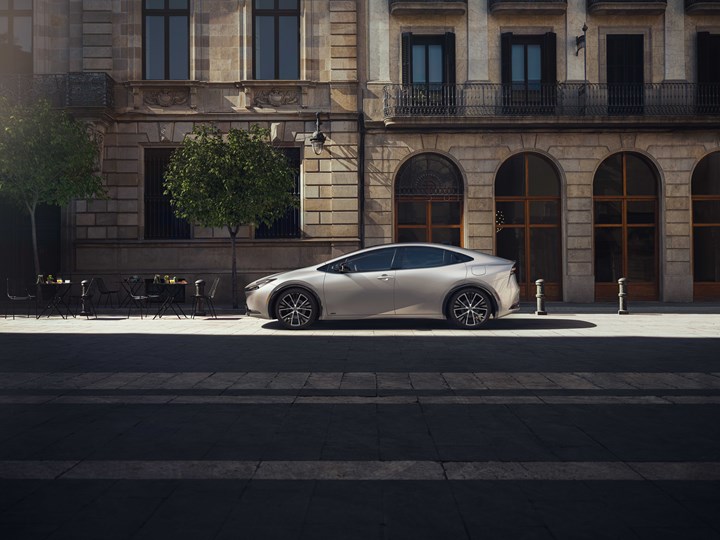
2023 Toyota Prius: the styling alone gives it an advantage over other compact sedans. And the hybrid system gives it a huge boost. (Image: Toyota)
The first thing to know about the fifth-generation Toyota Prius is the first thing anyone will see: A stylish compact sedan that has an advanced, clean exterior design that looks like something that wouldn’t carry the Prius moniker.
After all, from a design point of view, the Prius through the years hasn’t exactly been something that is the stuff of sheet metal dreams.
The first-gen Prius of ‘97 was, well, frumpy. But as it was such an unusual vehicle (“A hybrid? What’s that?”), there wasn’t a whole lot of attention paid to the exterior sheet metal.
Generation Two provided the turtle-back silhouette that became something of a standard for the vehicle.
Gen Three kept much of Gen Two’s presence.
And the fourth generation was, to put it mildly, both controversial and rather polarizing. (This design was so extreme that it was almost as though people took it as some sort of insult that Toyota would dare to do something so different.)
From a styling standpoint, Gen Four was as busy as Gen Five is pure.
One could (and I would) argue that regardless of what is under the hood the 2022 Prius will be successful in the market in a way that the Gen Four really wasn’t.*
But the thing is: what is propelling the ’23 Prius is certainly important, because while there are those (many of whom are in the aforementioned “How dare they!” crowd) who are criticizing Toyota for being slow to the full electric vehicle party, let’s do a little math here.
Doing Some Math
The new Prius is powered by a 2.0 liter engine that provides 150 hp. There are two configurations: front-wheel and all-wheel drive. In both cases there is a permanent magnet AC synchronous motor/generator that drives the front wheels and performs regeneration during braking. It is rated at 111 hp.
In the case of the AWD version of the Prius there is also a motor for the rear axle that performs electronic on-demand AWD performance; this permanent magnet motor produces 40 hp.
So the system horsepower numbers are:
- FWD: 194
- AWD: 196
Certainly reasonable numbers for a car that has a curb weight (depending on trim) ranging from 3,097 pounds to 3,340 pounds.
However, these are the numbers that are notable, the manufacturer’s estimated miles per gallon for the vehicle with the least curb weight (the LE with FWD) to the most (XLE and Limited AWD):
- LE FWD: 57/56/57 mpg (city/highway/combined)
- XLE/Limited AWD: 49/50/49 mpg (city/highway/combined)
The Prius has a 11.3-gallon fuel tank. So if one has an LE and drives until there is 0.3 gallons left in the tank, this means a range of 627 miles. For the more well-appointed and more performance-providing XLE/Limited it is 539 miles.
So this means that if the average driver travels 14,263 miles per year (a U.S. Federal Highway Administration number), for the driver of an AWD ’23 Prius it is a visit to the gas station every two weeks. For the driver of the LE, 23 times a year.
While the Prius isn’t generating zero emissions, it surely is producing a whole lot fewer than other vehicles that produce the same kind of horsepower, have comparable amenities and aren’t hybrids.
And it is worth pointing out that the starting MSRP for an LE is $27,450 and a Limited AWD $35,865, and, according to Kelley Blue Book, the average transaction price for an electric vehicle in November was $65,041, so someone could buy two Prius LE FWDs and have money left over for gas.**
The 2023 Prius is dimensionally bigger than the previous model but in terms of packaging provides reduced space.
Specifically:
MY 2022 MY 2023
- Wheelbase: 106 inches 108.3 inches
- Length: 180 inches 181.1 inches
- Width: 69.3 inches 70.2 inches
- Height: 57.9/58.1 inches 55.9/56.3 inches
Seems like the height reduction took a toll because here are the EPA volumes:
MY 2022 MY 2023
- Passenger: 93.1 cubic feet 91.2 cubic feet
- Cargo: 27.4 cubic feet 23.8/20.3 cu. ft
And here’s a surprising set of numbers when consider the seemingly sharp shape of the ’23 Prius:
MY 2022 MY 2023
- Drag coefficient: 0.24 0.27
The new Prius may look more slippery, but it isn’t.
There’s This
There are couple of interesting things that the ’23 Prius offers that improve performance and efficiency.
On the performance front, when starting from a stop the lithium-ion battery pack is drawn upon to provide the motor with a minor boost such that there is a smoother acceleration than is otherwise the case. (If you’ve driven hybrids you’ve probably noticed that there seems to be a sensation of vehicular busyness when you firmly depress the accelerator from a stop; the ‘23 Prius doesn’t have that.)
On the efficiency side, there is an electronically controlled brake system that coordinates braking between the hydraulic system and the regenerative system so that stopping power is optimized while as much electrical energy as possible is harvested from the regenerative brakes.
There are an array of technical amenities available, including the 12.3-in Toyota Audio Multimedia system, which was designed and engineered by the Toyota Connected Technologies team who are based in Texas. There’s an Intelligent Assistant (“Hey, Toyota”), Advanced Park, which allows hands-and-feet-free parallel and perpendicular parking. . . and more.
A Thought
There was an ad that appeared in 1926 that continues to a case study for marketing classes; its headline: “They laughed when I sat down at the piano.”
The copy-heavy ad (for a music home-study course) goes on to explain how the narrator had learned to play and “the laughter died on their lips” because he was good.
When Toyota brought out the Prius in 1998, there was laughter in some sections of the industry. The traditionalists simply thought that the Prius was some sort of joke that no one would ever take seriously.
But in the years since, “the laughter died on their lips.” Not only has the Prius racked up sales over the years, it has given rise to a family of hybrids that are selling quite well (e.g., through the first three quarters of 2022, 138,275 hybrid versions of the RAV4 have been sold in the U.S. To put that in perspective, the total number of electric vehicles sold by GM during the same period—Bolt EV/EUV, Cadillac LYRIQ and GMC HUMMER EV—is 22,830, or 16.5% of the number of RAV4s.)
And the 2023 Prius proves that Toyota’s hybrid continues to perform beyond expectations.
==
*In January 2016, the fourth generation Prius went on sale in the U.S. So the last full year of the third generation, 2015, saw Prius sedan sales of 113,829 units. For the first year of Gen Five Toyota sold 98,866. And for every subsequent year the number has declined, such that in 2021 total Prius sedan sales in the U.S. were 33,968. To be fair, those interested in hybrids had a whole lot more to choose from in 2021 than they did in 2015, when the choices were limited to the Prius sedan, Prius V, Prius C, Prius PHV, and RAV4 Hybrid. Specifically, in 2021 there were the Prius sedan, Prius Prime, Corolla Hybrid, Camry Hybrid, Avalon Hybrid, Sienna Hybrid, Highlander Hybrid, RAV4 Hybrid, RAV4 Prime, and Venza. As Lisa Materazzo, Toyota group vp, Marketing, points out, the company’s approach is to have a “portfolio” of powertrain choices, including ICEs, hybrids (standard and plug-in) and full electric vehicles (battery and fuel cell types).
**Yes, Toyota is moving toward an increased number of full electric vehicles, but other full-line manufacturers are talking about having 50% of their sales being fully EV by 2030, which means they will have 50% powered by ICEs in 2030. Somehow having fully featured vehicles with Prius-level fuel efficiency seems like a laudable thing.
///
Haute Voiture: “Extravagance” in Mercedes-Maybach Lingo
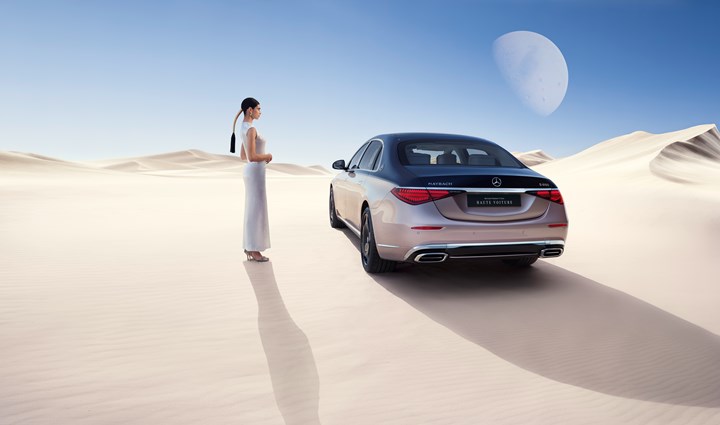
No, this picture of the Mercedes-Maybach Haute Voiture was not taken on Tatooine. (Image: Mercedes)
“The intricate features and exclusive design elements are what makes the Mercedes‑Maybach S‑Class Haute Voiture one of the most extravagant models we ever created – it represents Sophisticated Luxury in its purest form. Our customers have access to the most aspirational lifestyle, so we wanted to reflect this through creating something utterly desirable and using components never before seen on a Mercedes-Maybach.” Gorden Wagener, Chief Design Officer Mercedes-Benz Group AG
First know that the MSRP for a Mercedes-Maybach S 680—upon which this model is based on—is $229,000, so if this is “the most extravagant model” they’ve built, well. . .
Shimmering
The most notable aspect of the Haute Voiture seems to be the exterior paint: a “combination of metallic nautical blue on top, with a light shimmering rose tone in the lower section.”
The interior picks up on the blue and rose gold colors and adds a soupcon of crystal and glossy opal white features.
The MBUX infotainment system offers “Sparking glitter clouds and a variety of accents in shimmering rose gold” in order to “emphasize the catwalk atmosphere.”
Also emphasizing the exclusivity—there will be 150 built—are a hand-made giftbox, scale model of the car, key ring, and car cover.
(On a more pragmatic basis, know that Mercedes makes the S-Class models at Factory 56 in Sindelfingen, Germany, a €730 million facility that it opened in September 2020. The highly networked facility makes use of an assembly system that has autonomous vehicles that transport vehicles so that there can be either a moving line or stationary work performed. The plant is also sufficiently flexible so that there can be a mix of powertrain types installed (ICE, hybrid, BEV) in vehicles ranging in size from compact cars to SUVs.)
RELATED CONTENT
-
On Automotive: An All Electric Edition
A look at electric vehicle-related developments, from new products to recycling old batteries.
-
On Fuel Cells, Battery Enclosures, and Lucid Air
A skateboard for fuel cells, building a better battery enclosure, what ADAS does, a big engine for boats, the curious case of lean production, what drivers think, and why Lucid is remarkable
-
When Automated Production Turning is the Low-Cost Option
For the right parts, or families of parts, an automated CNC turning cell is simply the least expensive way to produce high-quality parts. Here’s why.


.jpg;width=70;height=70;mode=crop)






